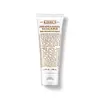What's inside
What's inside
 Key Ingredients
Key Ingredients

 Benefits
Benefits

 Concerns
Concerns

 Ingredients Side-by-side
Ingredients Side-by-side

Water
Skin ConditioningPropylene Glycol
HumectantBehenyl Betaine
CleansingPPG-5-Ceteth-10 Phosphate
EmulsifyingPEG-100 Stearate
Glyceryl Stearate
EmollientPhenoxyethanol
PreservativeSodium Chloride
MaskingLuffa Cylindrica Fruit
AbrasiveSodium Hydroxide
BufferingCitric Acid
BufferingPEG-32
HumectantPrunus Armeniaca Seed Powder
AbrasiveTocopherol
AntioxidantPropanediol
SolventEthylhexylglycerin
Skin ConditioningAllantoin
Skin ConditioningAscorbyl Palmitate
AntioxidantSesamum Indicum Seed Oil
EmollientAloe Barbadensis Leaf Juice Powder
Skin ConditioningPrunus Amygdalus Dulcis Oil
Skin ConditioningPrunus Armeniaca Kernel Oil
MaskingBHT
AntioxidantAnanas Sativus Fruit Extract
Skin ConditioningPapain
Skin ConditioningWater, Propylene Glycol, Behenyl Betaine, PPG-5-Ceteth-10 Phosphate, PEG-100 Stearate, Glyceryl Stearate, Phenoxyethanol, Sodium Chloride, Luffa Cylindrica Fruit, Sodium Hydroxide, Citric Acid, PEG-32, Prunus Armeniaca Seed Powder, Tocopherol, Propanediol, Ethylhexylglycerin, Allantoin, Ascorbyl Palmitate, Sesamum Indicum Seed Oil, Aloe Barbadensis Leaf Juice Powder, Prunus Amygdalus Dulcis Oil, Prunus Armeniaca Kernel Oil, BHT, Ananas Sativus Fruit Extract, Papain
Ingredients Explained
These ingredients are found in both products.
Ingredients higher up in an ingredient list are typically present in a larger amount.
Ethylhexylglycerin (we can't pronounce this either) is commonly used as a preservative and skin softener. It is derived from glyceryl.
You might see Ethylhexylglycerin often paired with other preservatives such as phenoxyethanol. Ethylhexylglycerin has been found to increase the effectiveness of these other preservatives.
Glyceryl Stearate is a mix of glycerin and stearic acid.
It is used to stabilize the mixing of water and oil ingredients. By preventing these ingredients from separating, it can help elongate shelf life. It can also help thicken the product's texture.
As an emollient, it helps soften skin and supports barrier-replenishing ingredients.
In cosmetics, Glyceryl Stearate is often made from vegetable oils or synthetically produced.
This ingredient may not be fungal-acne safe
Fun fact: The human body also creates Glyceryl Stearate naturally.
Learn more about Glyceryl StearatePeg-100 Stearate is an emollient and emulsifier. As an emollient, it helps keep skin soft by trapping moisture in. On the other hand, emulsifiers help prevent oil and water from separating in a product.
PEGS are a hydrophilic polyether compound . There are 100 ethylene oxide monomers in Peg-100 Stearate. Peg-100 Stearate is polyethylene glycol ester of stearic acid.
Phenoxyethanol is a preservative that has germicide, antimicrobial, and aromatic properties. Studies show that phenoxyethanol can prevent microbial growth. By itself, it has a scent that is similar to that of a rose.
It's often used in formulations along with Caprylyl Glycol to preserve the shelf life of products.
Sodium Hydroxide is also known as lye or caustic soda. It is used to adjust the pH of products; many ingredients require a specific pH to be effective.
In small amounts, sodium hydroxide is considered safe to use. However, large amounts may cause chemical burns due to its high alkaline.
Your skin has a natural pH and acid mantle. This acid mantle helps prevent harmful bacteria from breaking through. The acid mantle also helps keep your skin hydrated.
"Alkaline" refers to a high pH level. A low pH level would be considered acidic.
Learn more about Sodium HydroxideWater. It's the most common cosmetic ingredient of all. You'll usually see it at the top of ingredient lists, meaning that it makes up the largest part of the product.
So why is it so popular? Water most often acts as a solvent - this means that it helps dissolve other ingredients into the formulation.
You'll also recognize water as that liquid we all need to stay alive. If you see this, drink a glass of water. Stay hydrated!
Learn more about Water